This year my district has asked every teacher to set a personal goal for their teaching, which can be measured in some way. The idea is that our performance needs to be tied to student data, and so we needed to come up with a plan to indicate that our teaching is contributing to measurable student growth. Initially this could be a bit overwhelming, but I have to say that it has started me on a very exciting journey!
I decided to focus on building student perseverance. When considering the skills that I believe people need to be successful in a rapidly changing world, perseverance and creative problem solving are at the top of the list. While it is clear that reading, writing, and math are critical skills, I see the ability to look at a problem from different angles and to be persistent in problem solving to be even more important.
In order to begin, I wanted to get a measure of where my students are now (the data collection component). I decided to pair students up in partnerships that seemed to be “like level.” What I mean by this is that I paired two students that I figured would both be pretty perseverant, and I set up other pairs of kids that I did not think would be so strong. I wanted to have some “strong” pairs and some “needs improvement” pairs at the start. I did it this way to ensure that I did not have one partner carrying the team and skewing the scores.
For my initial challenge, I got this fantastic game. I absolutely love it! “Shape by Shape” is a puzzle game where the same shapes can be used to build a wide variety of pictures. The kids were given a picture to complete, and they needed to work as a pair to recreate the picture using the puzzle pieces.
I set up a data collection sheet that was very simple. Basically I started a timer when the kids started working on the puzzle. I did not offer any assistance while they worked – just observed. I stopped the clock the first time one of the kids asked for help. I want kids to know that asking for help is acceptable and important. However, I also want them to actively try independently before appealing for help. I see a big difference between kids who try a few options before asking for help, and kids who immediately say, “This is hard. Can you help?”
Once the kids appealed for help, I gave them this hint. It often was more than enough to get them to the end. Sometimes the kids did not succeed. Either way, I got a lot of information on their perseverance as well as their skills in working in a partnership.
I observed some very interesting things. First, it was very hard for me to keep my mouth shut. I wanted to help, which is natural for a teacher. I learned just how much I will have to work on myself to stand back. Also, I noticed that, when in a situation where I literally gave them as much time as they wanted, kids used the time. I realized that I often move things along quickly in order to manage the group. Because we can’t stick with one thing all day and still cover the necessary curriculum, I tend to let kids try up to a point, and then help them simply to move along. This is definitely something for me to work on. Unintentionally I am damaging their perseverance by limiting their time. When I sat and just watched for as long as the kids needed and wanted, they did stick with it longer than anticipated.
Finally, my initial impressions of kids were pretty spot on. Perseverance (or lack thereof) is seen all throughout the day. The same kids that struggle with behavior, reading, writing, and math also struggle with perseverance. The kids that have confidence in these areas also have confidence to try new things.
My plan is to focus on building perseverance over the next several months, and do a similar data collection later on to see if the kids are more perseverant after our work together as a class.
How do I plan to teach perseverance? Here are my ideas:
1. I am planting this into my daily language in the classroom. I am working on saying things like, “You stuck with that problem and tried it in a couple of different ways,” or “It can be frustrating to not get it the first time, but we stick with things and try again!”
2. Reading – I have gathered a great variety of books (fiction and nonfiction) that deal with the concept of perseverance. I have also found some wonderful books showcasing creative thinking and problem solving. These are making up a large component of my class read alouds.
Here are some books that directly talk about being perseverant:
Here are some books that use perseverance within a story, and demonstrate creative problem solving:
3. I plan on providing challenging team problems as part of our weekly curriculum. I have gathered ideas for team challenges, small group puzzles, brain teasers, and science experiments. I plan to embed activities that challenge kids to think and problem solve creatively. I think one or two days a week we will spend time on this type of activity. I will give the kids lots of opportunities to practice their problem solving, and I will practice my skills in facilitating problem solving by standing back and being quiet.
Here are some books I am accessing for ideas:
Here are some puzzles I got that I plan to use:

 I also plan to do some large group challenges, similar to the one seen here. Kids need to creatively problem solve ways to use the materials provided to solve a problem (ex: get across a path without stepping on the ground).
I also plan to do some large group challenges, similar to the one seen here. Kids need to creatively problem solve ways to use the materials provided to solve a problem (ex: get across a path without stepping on the ground).
Finally, I plan on having a series of science challenges, such as this. Here, kids need to build a structure that will keep the egg safe when dropped from several feet.
4. I plan on extending this into lots of areas. For example, I want my kids to be persistent in trying to read unknown words. Part of that will involve having useful tools and anchor charts that they can use independently. I want to be sure this idea of perseverance fits nicely throughout every part of our day – from zipping coats to building structures to writing words.
I have to say that this new district requirement has spurred so much thinking and excitement! I can’t wait to share how this endeavor develops. How do you build perseverance in your students?

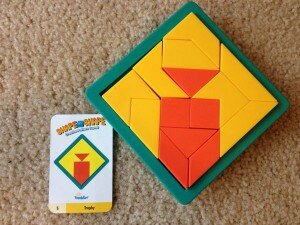
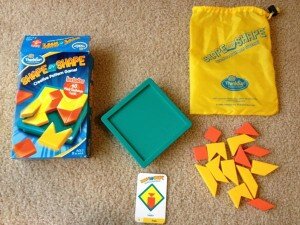
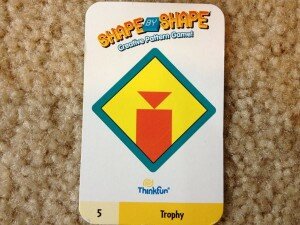
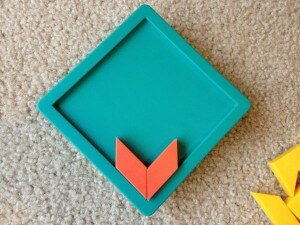
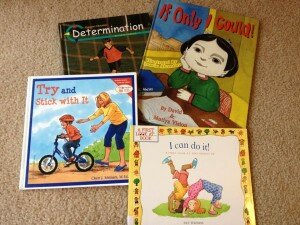

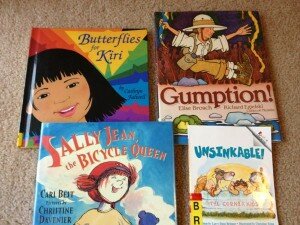
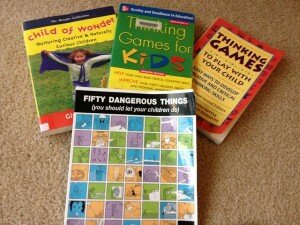
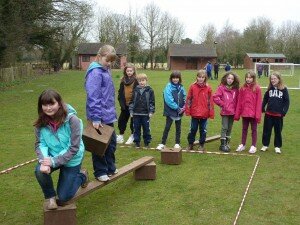
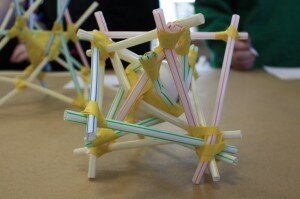
An incredibly, in-depth assessment! You are spot on with your thinking. Thank you so much for sharing your insight. I will be using some of your ideas tomorrow.
Thank you! Let me know how things go.
I love this! I would like to purchase the Shape-by-Shape puzzle game! How can I do that?
Hi! It is truly inspiring. I got the shape puzzle on Amazon. Here is a link: http://www.amazon.com/Think-Fun-5941-ThinkFun-Shape/dp/B00000IRZ4/ Enjoy!
It’s a great goal, as I see it being the difference between my “cans” and “can’ts” in the classroom. That said, wonder about follow-up. The egg drop, for example, tests a lot of things, but unless there is an expectation (the device works from X feet high) and they do it until they achieve that, I’m not sure how this is perseverance? And how do you help the kid who gives up, or rides along with the group?
I’m also curious, when you have it, what you data looks like. And, more importantly, if you are seeing it elsewhere. For example, I find getting kids to read an article or maintain SSR for thirty minutes to be great payoffs. Are you seeing perseverance carrying over?
The follow through and data varies. For example, the idea with a building project like the egg drop is to provide and encourage the follow through on the kids’ own time. The original activity was large group and required, with either success or failure. But then, later in the day when the kids have free play, I put the materials out again and let them keep trying if they like. I find that more than half of my kids are very excited to go back, rebuild, and keep trying. One year I had students that took it upon themselves at home to gather materials and KEEP working on it, and I had models being brought in for weeks. I have no data on that, but I promise that an impact was made.
There are, of course, kids that don’t choose to go back and try again, and kids that do give up. I think the best option there is to continue to provide opportunities, and to give recognition for the effort and perseverance that you see happening. Kids want to be noticed. If I give attention, praise, etc to students that continue to try, it becomes contagious. Fool proof? No. An improvement? Yes.
When I began with this goal, I did collect preliminary data. I wrote about that in detail earlier in the post. I completely agree that building reading stamina is a great goal, and shows perseverance. Once “perseverance” becomes a classroom term, the kids are excited to recognize more ways to show it. I would suggest that lengthening SSR time is an example of building perseverance, and talk with the kids about graphing their reading times as they work towards a goal.
In terms of carry over, I see the kids being motivated to demonstrate their perseverance. I need to notice it, and they begin to notice it as well. Hope that helps!
I adore this post. My school’s theme is perseverance and while it is a big word and takes perseverance to remember how to spell it…it is a great lesson for kids. Today we watched the Lego story and shared how we thought it showed perseverance. http://imaginationsoup.net/2012/08/creativity-the-lego-story/
Laurie
Thank you! I really enjoyed the Lego movie. It was one of those that I had NO expectations going in, and found it to be such a fantastic message.